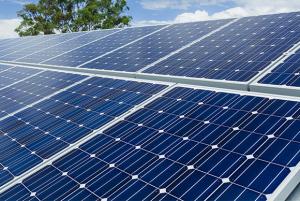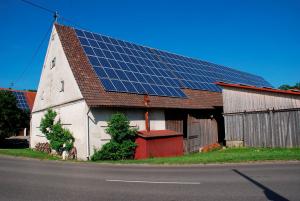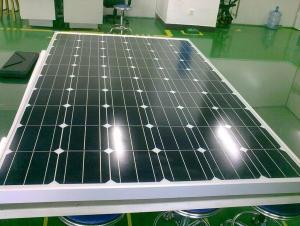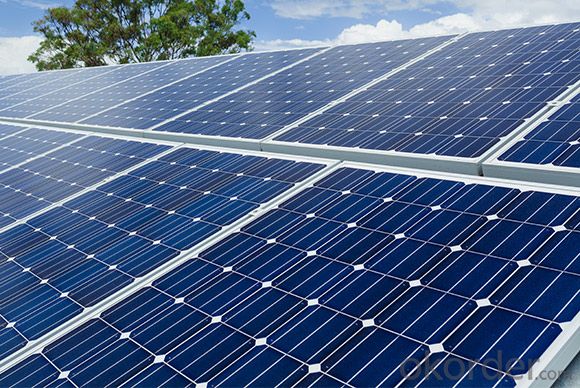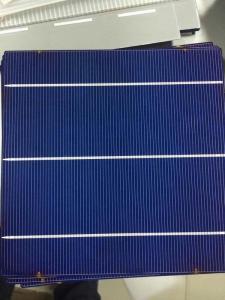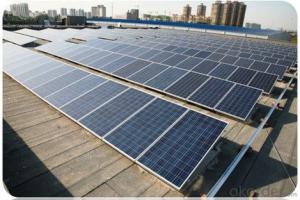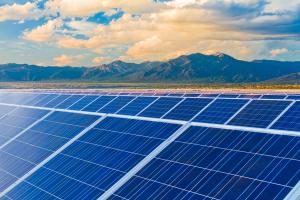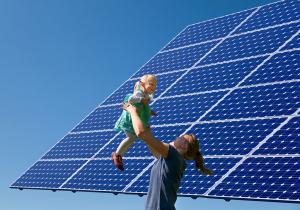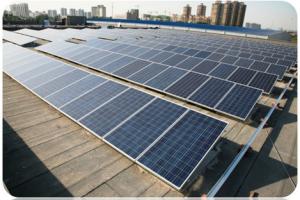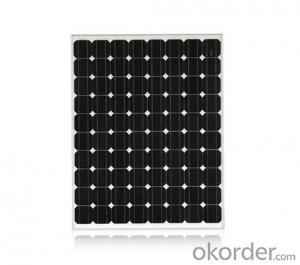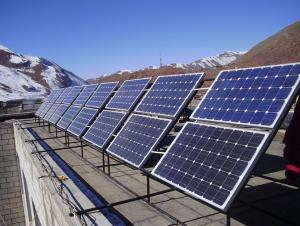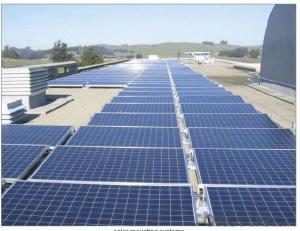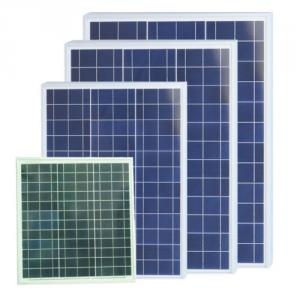Pearl CNBM Solar Mono-Crystalline PV Panel 305W
- Loading Port:
- China main port
- Payment Terms:
- TT or LC
- Min Order Qty:
- 100000 watt
- Supply Capability:
- 10000000 watt/month
OKorder Service Pledge
OKorder Financial Service
You Might Also Like
About us
CNBM International Corp, established in 2004, is the business entity for trade and logistic of CNBM Group.With the advantages in Cement, Composite Materials, New Building Materials and Engineering, CNBM mainly concentrate on coal, steel and construction equipments and give priority to solar and wind energy development.CNBM International is highly recognized by its business partners and clients all over the world and has established good business relationship with the customers in over 120 countries and regions all over the world.
Mono-crystalline solar module is the core part of solar power systems, as well as the most important part of the solar system. Mono-crystalline solar module consists of high efficiency crystalline silicon solar cell, super white cloth grain toughened glass, EVA, transparent TPT backboard and the composition of aluminum alloy frame. The function of Mono-crystalline solar module is to convert solar energy into electric energy, or sent to the storage battery, or promote work load. The quality of the solar energy battery components and cost will directly decide the quality and cost of the whole system.
Standard Test Conditions of Polycrystalline Silicon Solar Panel
The opto-electrical specifications shown below are stabilized values being measured at Standard Test Conditions of multicrystalline silicon Solar Panel, Irradiance: 1000W/m2, Spectrum: AM1.5 at 25°C, The info below is subject to manufacturing tolerances. Where appropriate minutes of measurement are available and are used for the dimensioning of the installation.
Advantages of Polycrystalline Silicon Solar Panel
A&M Solar performance guarantees for 25 years
12 years guarantee for workmanship for multicrystalline silicon Solar Panel
Timeliness of delivery
Quality Products certified (TÜV, UL, CE, VDE, ISO)
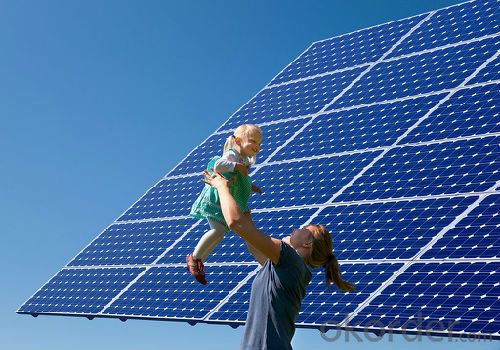
FAQ:
Q1: Why buy Materials & Equipment from OKorder.com?
A: All products offered byOKorder.com are carefully selected from China's most reliable manufacturing enterprises. Through its ISO certifications, OKorder.com adheres to the highest standards and a commitment to supply chain safety and customer satisfaction.
Q2: How do we guarantee the quality of our products?
A: We have established an advanced quality management system which conducts strict quality tests at every step, from raw materials to the final product. At the same time, we provide extensive follow-up service assurances as required.
Q3: How long can we receive the product after purchase?
A: Within three days of placing an order, we will begin production. The specific shipping date is dependent upon international and government factors, but is typically 7 to 10 workdays.
- Q: we are planing to move out of the grid. we need to operate constantly 2 laptops online - does any one can tell us how much solar panels we shall need to make sure of that?
- A laptop is about 70 to 00 W, and you have two. You also may need to power a router, and modem. So, about 50W to 250W contineous should cover it. To save power when not in use, you can let the display go blank. This will reduce your solar pannel, and battery size, and cost. You will need batteries, and blocking rectifier to store the energy for use at night, and a 300W to 400W inverter. Checkout the link below for purchasing solar equipment. You can only hope to get about 8 to 9 hours of full output from your solar pannels, and 80% efficiency. The laptops will be on and using about 200W for the 8 hours during the charging period. So your pannels, need to produce that plus 2 times more than this amount, so you can charge the batteries for the evening, at the same time. So for 24 hour operation, you will need 200W x8hrs for the laptops, plus (6 hours*70W)/8=340W avg. Total of ~540W for 8 hours. Assuming you use power saving modes when not in use, you can probably get away with 3x60W -- 520W to 600W pannel. ( Thuja is right, a few cloudy days may knock you offline) Batteries. A common low cost ( $40) automotive battery can hold about 40 Amp/hours at 2V. Under load, you may get 35 Amp hours at 0V, which is about 350Watts for one hour. You need about 80W avg for 6 hours, or ~ 2900Watt Hours. Which means you would need 9 automotive batteries. Deep storage batteries cost more, but are more durable. 6*00W pannels, $460*6 ~ $2800 Inverter $70 Batteries $400 Battery cables, rectifier, lugs, connectors $50 There are probably some other hidden costs. I was rooting for you, but it appears to be pricey. Another thing you can do, is to use the new energy efficient RF florescent bulbs for lighting. The color and brightness are excellent, and a 60W bulb only uses about 3W, and they last a lot longer as well.
- Q: Exactly How much power will this kit produce? for example. Will it only be able to power the 2 light throughout an entire day or would it be able to power a couple TV's with a couple lights. Or a Refrigerator? washer dryer? I'm just wondering exactly what it will be able to do and if it's worth paying $200 for if it'll only power two lights. Don't get me wrong, That's great and will make a difference but i'm looking for something that will make a little bit of a bigger difference. Would the 80 watt monocrystalline solar panel be much better? if so, what would it be able to power? double?
- Yes, 80 watts will be nearly twice as useful as 45 watts - but 80 is still a small number. Solar panel systems need an inverter and there's a slight energy loss at the inverter. And, if you want to use the day's energy at night, you'll need a battery or two. And every time you move energy into or out of a battery, you lose a little of the energy. All this is to say that you need to sum up the wattage of your appliances and add a fudge factor to accommodate for the losses. I looked at the kit and was moderately impressed. $200/45=$4.44/watt; that's a reasonable price but the links I left below talk of prices as low as $2.58/watt. Also the Harbor Freight kit doesn't contain an 'inverter' which you would have to buy. Also the wattage advertised for any solar panel assumes the thing is clean and pointed right at the sun on a clear day.
- Q: Ok so I am planning on buying a solar panel. I am doing it to possibly sell the energy that it stores. It is a 20 watt panel so I am just wondering if every week or month if I sold that energy that it stored would make me a good profit. I am not hoping for thousands of dollars a month..just like 00? The solar panel cost me $,00 so if so, how long do you think it would take to make good profit. Also, how much would I make every week or month?
- I will give you the tools to answer your own question. Here is the solar resource map: rredc.nrel /solar/old_data/nsr... Use it to look up the hours of peak equivalent sunlight per day in your area. For example, let's say it's 5 hours / day. Then per year you get 365 x 5 = 825 hours of sun Your panel is 20 watts, or 0.2 kW So the energy produced per year is 825 x .2 = 383 kWh You'll have to use the proper numbers for your own area, of course. Anyway, you can take that 383 kWh and determine how much it would cost at local electric rates. Never know, on some islands, it's $.00 per kWh. Check with your local electric company for rates.
- Q: Can solar panels be installed on public transportation systems?
- Yes, solar panels can be installed on public transportation systems. In fact, many cities around the world are increasingly integrating solar panels onto buses, trams, and trains to harness clean energy and reduce carbon emissions. These panels can be installed on the roofs or sides of vehicles, enabling them to generate electricity and contribute to the power needs of the transportation systems.
- Q: Solar panels single crystal and double crystal in the rain which is easy to use
- Polycrystalline silicon solar cell production process and monocrystalline silicon solar cell almost, but the polysilicon solar cell photoelectric conversion efficiency will have to reduce a lot of its photoelectric conversion efficiency of about 12% (July 1, 2004 Japan Sharp market efficiency of 14.8% Of the world 's most efficient polysilicon solar cells).
- Q: Okay, I think I understand what I'm doing, but I want to set up some solar panels on the roof of my garage, the building that gets the most sun, and I want to make sure all my math is correct in determining number of megawatts per year. However, my knowledge of electrical terms in quite n00bish, to say the least.Here is what I think I should be doing.The solar cells come at .75 Watts average power.I will install 4 panels of 64 cells each, with a total of 256 cells.
- For comparison, 36 of these make a normal 2V x 50W panel. Note they are not tabbed. This means you have to find a way to connect them yourself. The tabs are probably spot welded on by the suppliers. A supplier below has kits of these with tabs, as needed to connect them together. These are not suitable for grid connect, because the higher voltage needed makes do it yourself panels a dangerous and litigious thing to have on your roof. Maybe you could buy a smaller pack from the link below to compare tabbed and untabbed and work out what to do. Your power calculation is a bit incorrect because the sun is only present some of the time. The 36 cell module would produce 50W when square on to the full sun. The sun may be out for around 2h a day in some places and times of the year. However it is the equivalent of 5h full sun, because of the changing angle throughout the day. Look this up on the internet for your region. Temperate zones may be a lot less. One pack in your link is 36x3 = 08 cells. Thus 50W per pack x 5h a day gives 750Wh per day and 274KWh/y. In reality it will always be less because of regions, weather, clouds, dust, inefficiencies, aging of cells.
- Q: thinking of getting a portable solar panel laptop charger...may be a stupid question but may be a very intelligent one as well ;)
- If you intend to use your panels inside a plane, answer is: solar panel intended for indoors use would most likely work inside a plane without problems. If you intend to mount your panel outside a plane :) it would actually work better than on the ground - there is more light at high altitudes and above clouds than it is on the ground. I'm not sure what portable in this case means - how big or how small is your panel? Solar panels are known for their low efficiency, so high-power solar panels are too big and too heavy to be used in aeroplanes.
- Q: i am doing this group project fro school. I would like to know if anybody knows anything about how to read a Spec. Sheet on Solar panels and where I could go to start researching them. Anything would be great!
- i think of you may desire to examine slightly extra approximately photograph voltaic capability and battery utilization. possibly you heavily isn't waiting to do this effectively with an on board photograph voltaic gadget. examine the wattage (volts situations cutting-edge) of the motor. you would be fortunate to get 0 watts according to sq. foot from a photo voltaic panel at midday on the excellent day. thinking the sq. photos necessary the dimensions and weight of a fee controller you need to be extra advantageous off with connection to a distant charger, powered from AC
- Q: Can solar panels be installed on mountain huts or lodges?
- Yes, solar panels can be installed on mountain huts or lodges. In fact, mountainous regions with ample sunlight can be ideal locations for solar panel installations. These panels can harness the sun's energy and convert it into electricity, providing a sustainable and reliable source of power for the huts or lodges.
- Q: Can solar panels be used in areas prone to hurricanes?
- Yes, solar panels can be used in areas prone to hurricanes. However, it is important to ensure that the panels are properly installed and designed to withstand high wind speeds. Reinforcements, such as additional framing or anchoring systems, can be used to make the panels more resilient to hurricane conditions. Additionally, regular maintenance and inspections are necessary to ensure their stability and functionality.
Send your message to us
Pearl CNBM Solar Mono-Crystalline PV Panel 305W
- Loading Port:
- China main port
- Payment Terms:
- TT or LC
- Min Order Qty:
- 100000 watt
- Supply Capability:
- 10000000 watt/month
OKorder Service Pledge
OKorder Financial Service
Similar products
Hot products
Hot Searches
